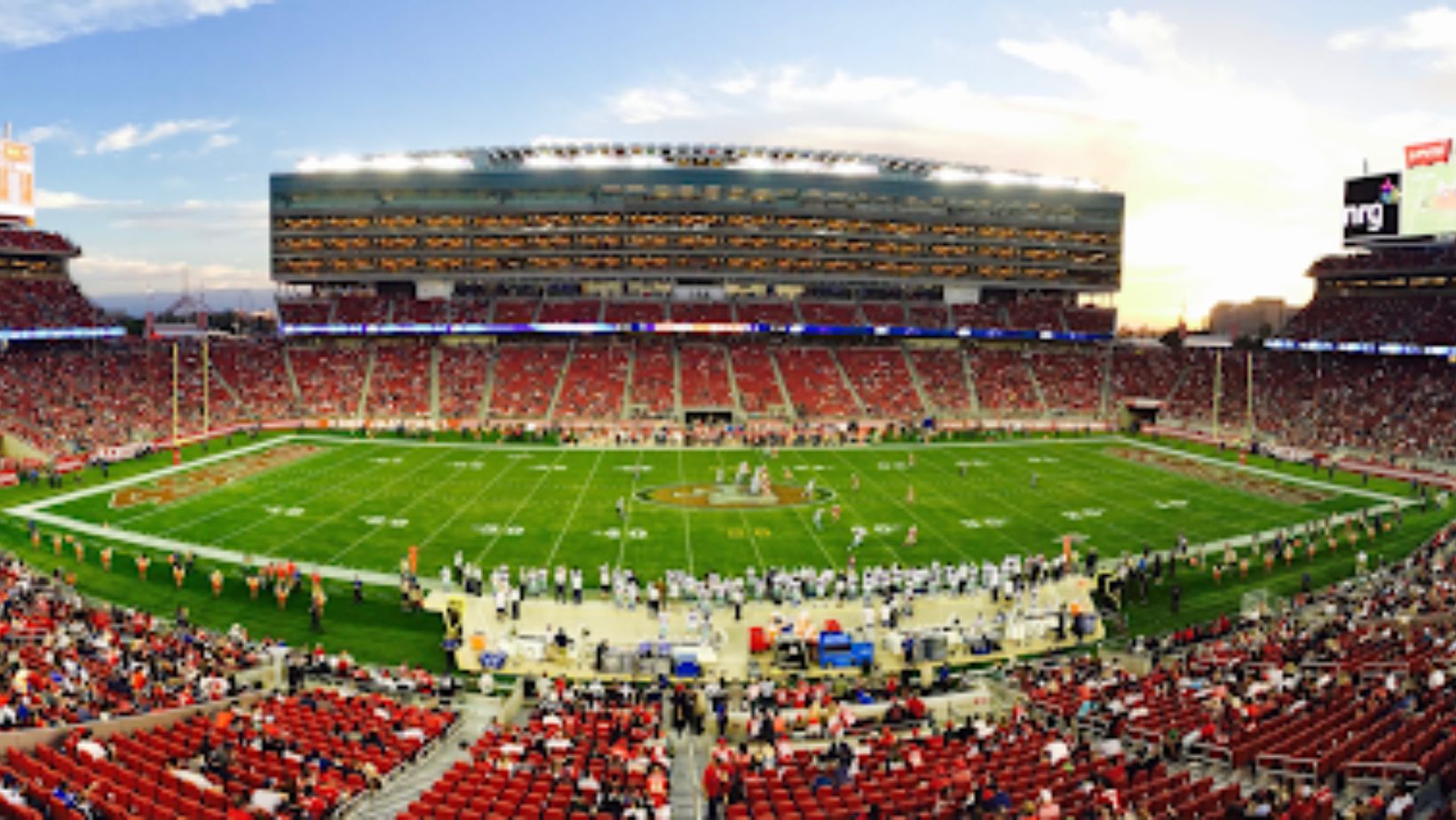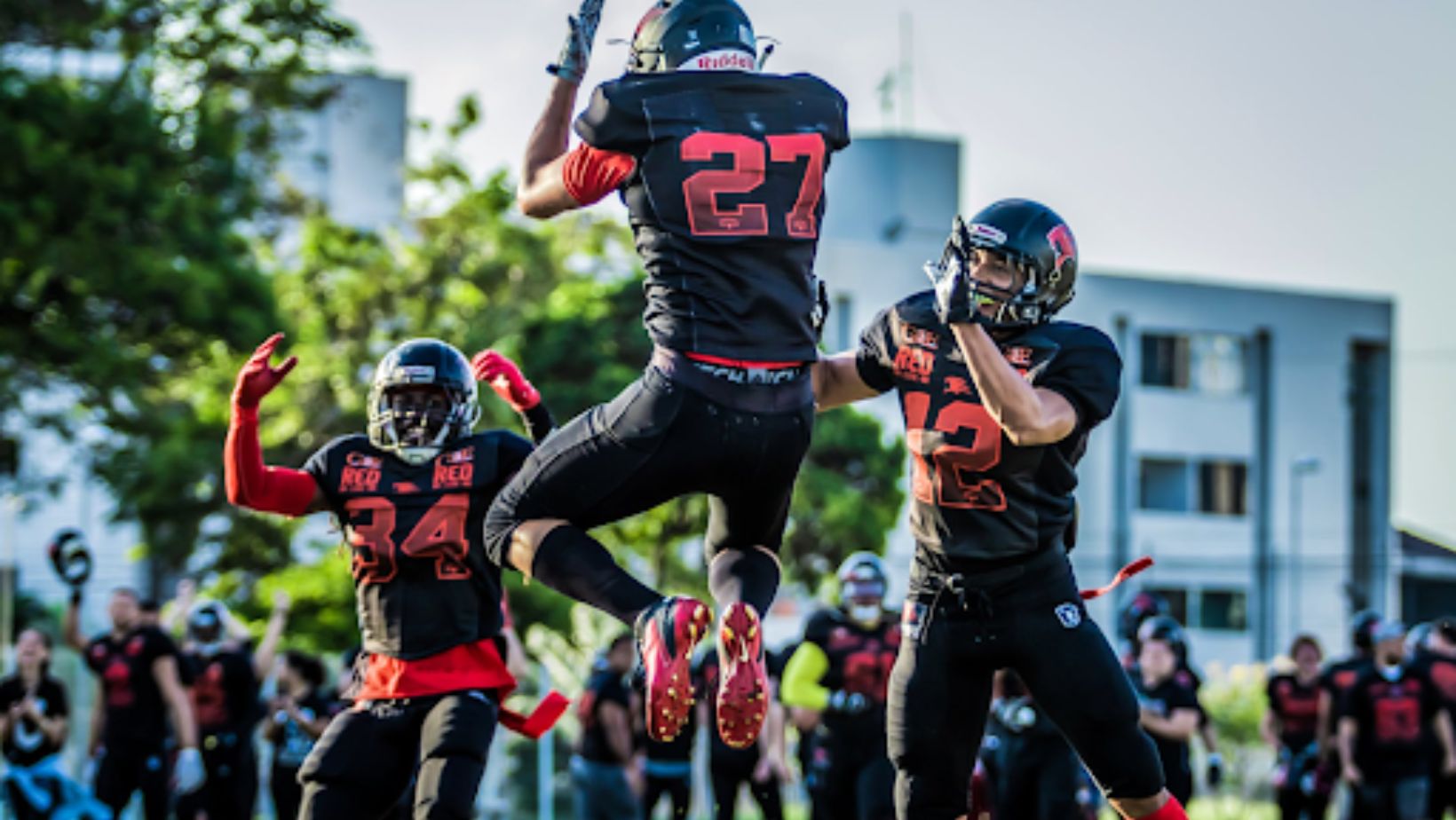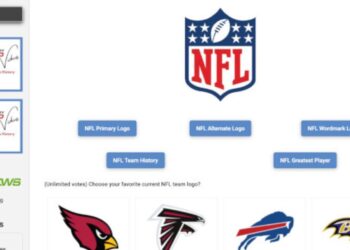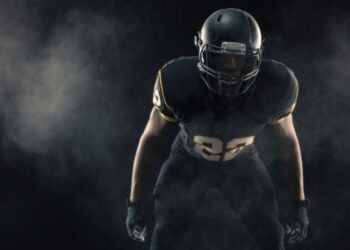
American football is not just a sport. For its ardent supporters, it’s a convergence of culture, identity, and tradition. A significant part of this ethos is encapsulated in team uniforms — the colors, the crest, and the unmistakable branding.
Let’s delve into how logos and branding on American football uniforms shape the perceptions, performance, and profiteering associated with the nation’s beloved sport. Discover the compelling journey from sketch to stitch in the creation of these iconic symbols.
Exploring The History of Branding and Logo Design in American Football
American football’s rich tapestry is woven with tradition, which is a central aspect of which is team branding. The National Football League (NFL) created its first official emblem in 1940, which featured a simple shield design, stars, and a football in the middle. The logo was created to represent all its teams similarly and to unite everyone under one banner.
The Los Angeles Rams were the first NFL team to feature a logo on their helmets in 1947.
The team’s halfback, Fred Gehrke, who was trained in art, hand-painted the first-ever NFL helmet with a logo in his garage. The logo was a simple ram’s horn design that has remained mostly the same, except for color, ever since.
Other teams soon followed suit, making logos a mainstay of American football. Traditions evolved — symbols encompassed local culture, mascots, and team ethos, creating a visual tie to the team’s heritage and ethos.
Understanding The Role of Logos in Team Identity
Logos can be a team’s strongest visual element, engraving a symbolic identity onto a player’s chest and fans’ hearts. In the universe of American football, where countless teams vie for dominance, logos help create a unique aesthetic persona that distinguishes one team from another.
Logos become synonymous with a team’s identity, resonating with the team’s ethos, region, history, and values. Be it the Dallas Cowboys’ lone star signifying the “Lone Star State” or the Philadelphia Eagles’ eagle representing resilience and courage, every logo has a story. This visual narrative fosters a psychological association and a sense of belonging among players and fans alike.
The Impact of Uniform Branding on Team Solidarity
Uniform branding plays a pivotal role in breeding solidarity within a team. When players don the same custom-made football uniform featuring the team’s logo, they experience a sense of unity and camaraderie that transcends individuality. This unity often translates into enhanced teamwork and better on-field performance.
The logo and colors worn as a badge of honor can foster feelings of loyalty, shared responsibility, and mutual respect among players. In this collective identity lies the often overlooked yet powerful motivational push for players to go that extra mile for their team.

The Psychological Influence of Logos And Branding on Players’ Performance
While on the surface, logos may seem a mere element of design, research suggests that they have a profound psychological impact on player performance. The right logo and branding can instill a sense of pride, motivation, and even intimidation.
Players wearing a uniform featuring a powerful, positive symbol are likely to imbibe those qualities, enhancing their performance. An emblem of strength or speed, for instance, can subconsciously empower players to embody such traits. The logo essentially works as a daily visual reminder of the team’s values and aspirations, thus influencing the mindset and performance of players.
The Contribution of Uniform Branding in Fan Engagement
Branding goes beyond the field, creating an emotional connection with fans. Logos forge a strong bond between fans and their chosen team, becoming symbols that encapsulate collective hopes, dreams, and shared memories.
Unfurling a team’s flag or wearing a jersey becomes a rite of passage for many — a demonstration of allegiance and a way to feel part of something bigger. The right branding can transform mere spectators into die-hard fanatics, fueling the passion that makes American football more than just a game. From social media discussions to heated debates in sports bars, logos carve out a unique engagement touchpoint for supporters.
The Influence of Logos on Merchandise Sales And Revenue Growth
The right branding extends its impact beyond team identity and fan engagement. It significantly impacts a team’s financial prosperity. Merchandise sales, a major revenue source for football teams, are directly linked to a team’s branding. More than just clothing, these items are collector’s pieces, gifts, and symbols of loyalty. Jerseys, caps, flags, and even mugs with team logos become coveted souvenirs that fans are eager to purchase. A well-designed, meaningful logo can ramp up merchandise sales, thereby boosting the team’s revenue and market value significantly.

Controversial Logo Changes And Rebranding Missteps in American Football History
Not all endeavors into a logo redesign or team rebranding have been successful or well-received. For instance, when the Cleveland Browns revealed a “new” logo in 2015, the minimal change from brown to a slightly different shade of brown left fans feeling underwhelmed.
In another instance, when the Washington Football Team announced its decision to retire its old logo due to the cultural insensitivity it presented, it faced a polarized reaction from its fan base.
Such episodes underline the importance of thoughtful, inclusive, and meaningful logo design, highlighting that drastic changes can upset fans and hamper team identity.
Summing Up: The Imprint of Logos And Branding on American Football Culture And Consumer Behavior
Logos and branding play a multifaceted role in American football. They’re not mere design elements but powerful symbols that shape team identity, influence player performance, drive fan engagement, and play a crucial part in the financial realm. While logo changes and rebranding efforts are an integral part of this evolving sport, their delicacies require measured execution. Ultimately, a well-crafted logo has the power to resonate with millions, influencing not just the sports culture but consumer behavior at large.






